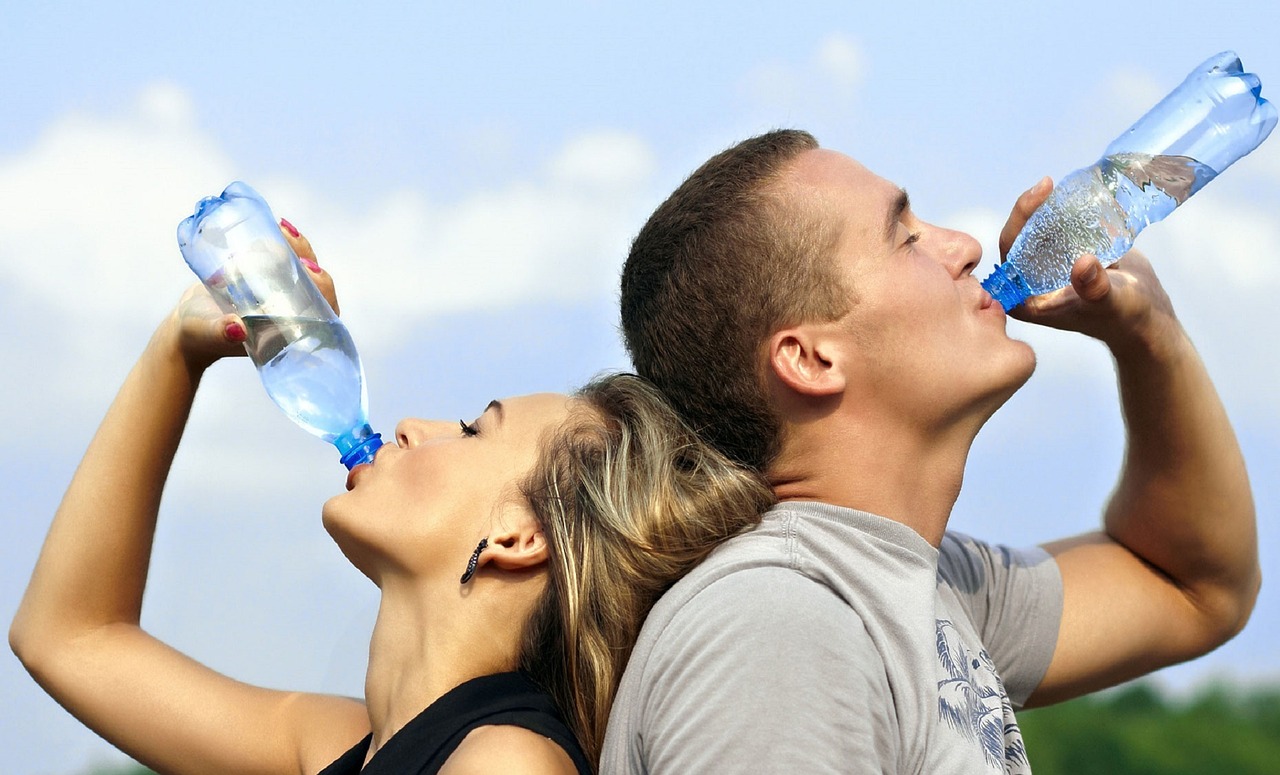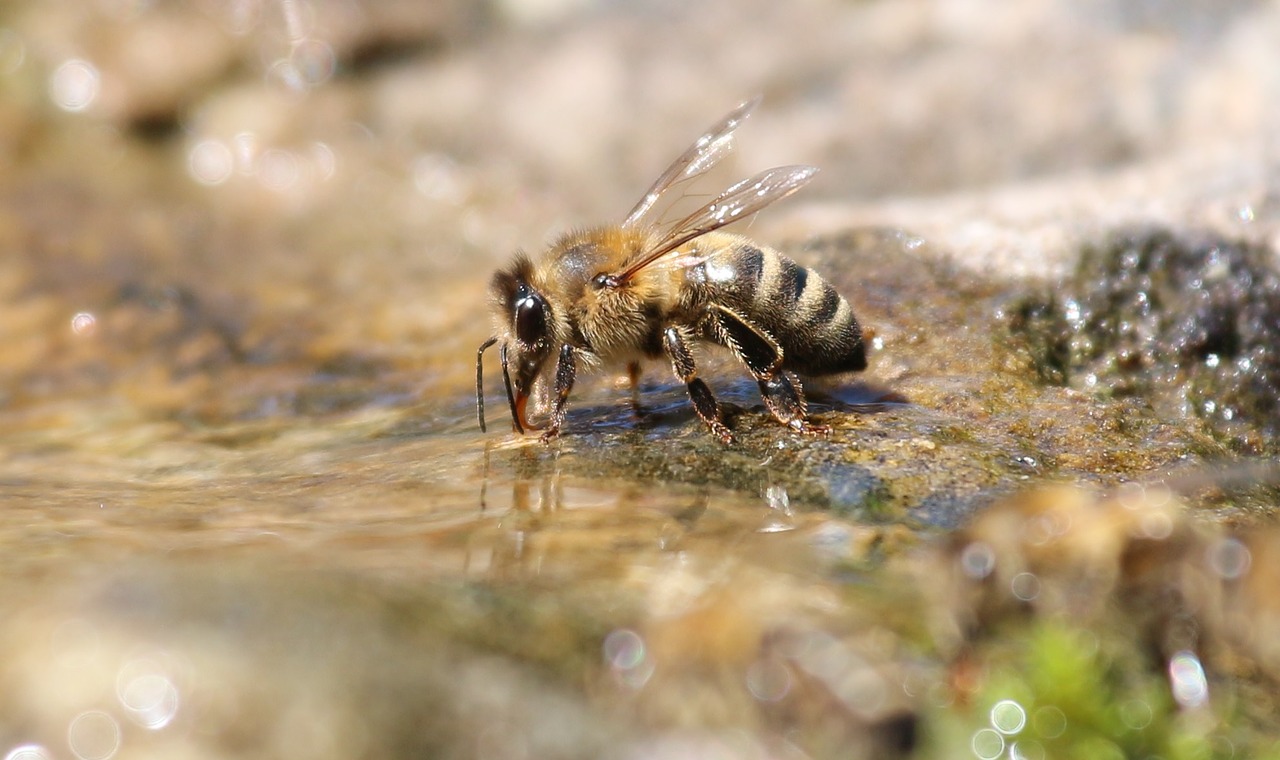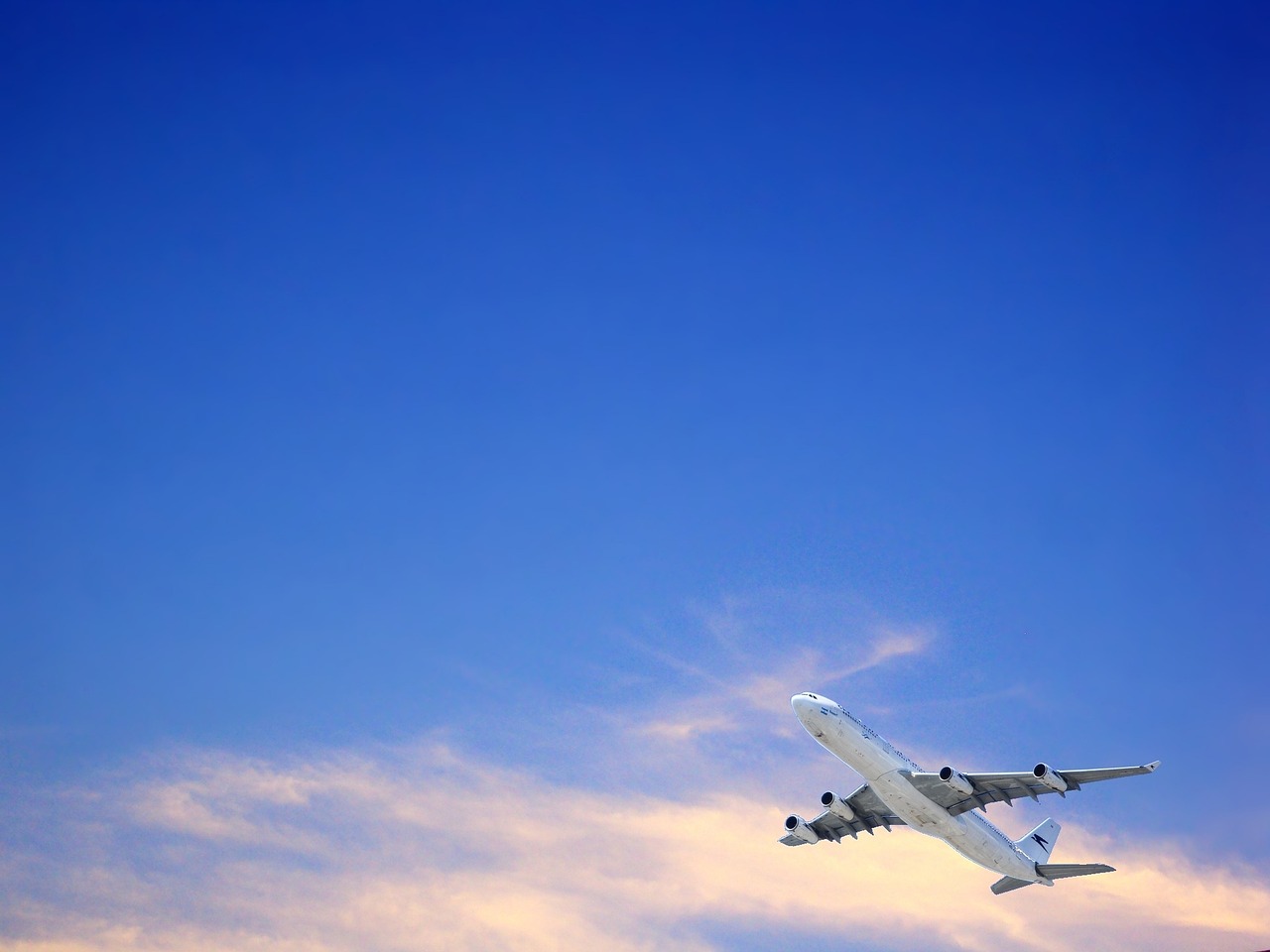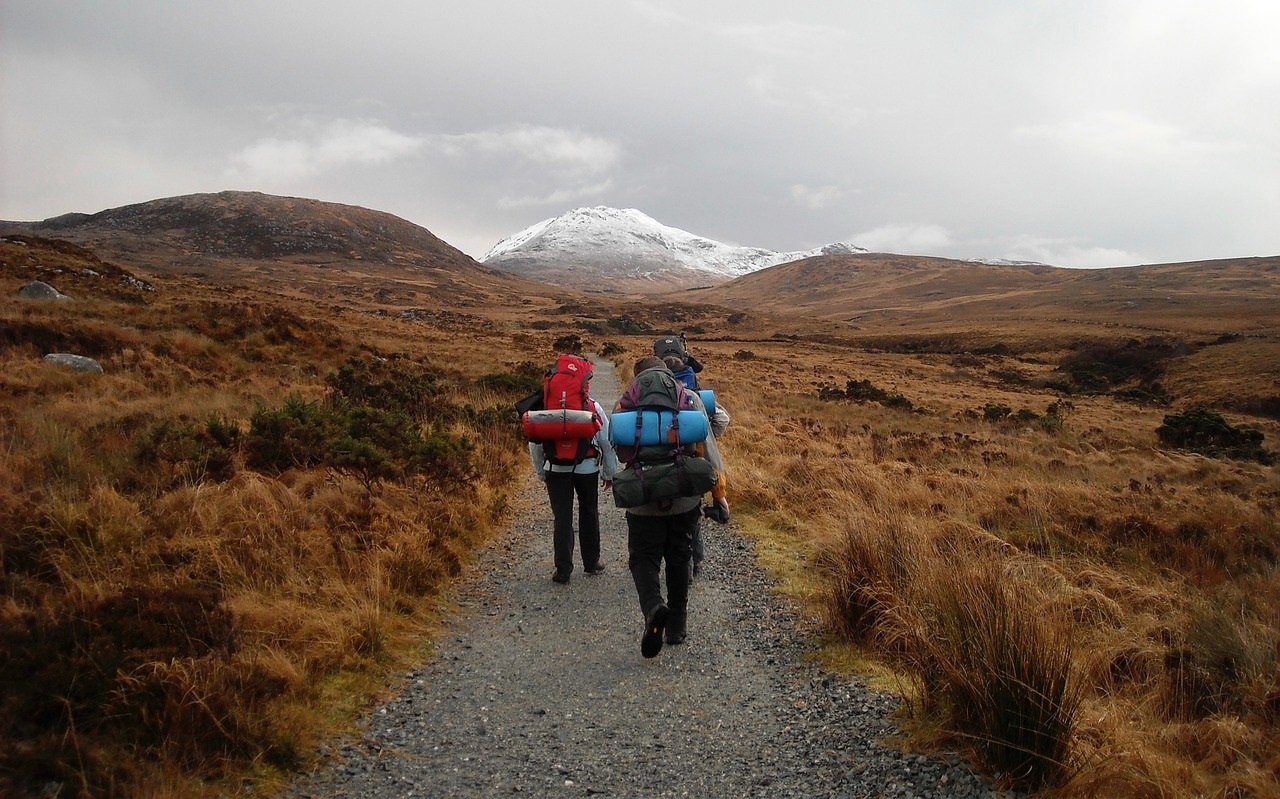Tips for staying healthy while travelling
- Gastrointestinal problems
- Chopped or insect' bites
- Illnesses transmitted by animal' bites
- Alterations caused by climatic conditions or geographical
- Chopped and dangers in the water (in the rio or in the beach...)
- Sexually transmitted diseases
- Travel in plane
- Travel in car
- Travel by boat
- In the mountain, care!
- Alert before subaquatic activities!
Lee the complete content in Infermera Virtual
1. Gastrointestinal problems
The most frequent alterations gastrointestinals in a trip are the call diarrhea of the traveler and the estreñimiento. The two are explained, in general, for the change of food habits, of foodstuffs, of the type of water, of schedules and, in trips to a developing country, also for pollution of the water, of liquids or of foodstuffs by pathogenic organisms.
Waters and liquids
General guidelines
In countries with high temperature or in periods of summer, to drink a lot of water and/or liquids to avoid the dehydration or sunstroke.
Specific recommendations
People that they travel to places where you can give tall risk situations, as developing countries, they must maximise these prevention measures:
- Drink packed water.
- Avoid ice cubes of ice if the guarantee is not had of that are made with drinkable water.
- Consume sodas or wet goods and to ensure of that the cap is intact or the close, airtight.
- Take infusions as the tea or the coffee, since he must boil the water to prepare them.
- Potabilizar the water when is not drinkable, doing her to boil during 10 minutes. If this you can not do, they must use purifying ready by chlorine and to follow the recommendations of the manufacturer.
Food
General guidelines
- Wash up hands before eating not to contaminate foodstuffs.
- Avoid foodstuffs in bad condition or that they have not happened no health control.
Specific recommendations
People that they travel to places where you can give tall risk situations, as developing countries, have to maximise these prevention measures:
- Consume cooked foodstuffs and finished of doing, since the disinfectant effect of the inactive fire possible microorganisms.
- Avoid to consume foodstuffs with more possibilities of being contaminated by microorganisms, as are:
- Raw vegetables and the peeled fruit; he must peel her self or to wash her with drinkable water or potabilizada;
- The meat, the fish and the seafood little cooked ones.
- The milk and the derivatives milk animals landlords without health control.
- Products of cake shop and homemade ice creams.
- Cooked foodstuffs that have been exposed to high temperatures during a long period of time.
- Purchased foodstuffs to door-to-door salesmen or in positions of the street, since hygienic conditions usually are more precarious in these contexts.

2. Chopped or insect' bites
The chopped ones or the bites of insects can produce local reactions (itch, inflammation, blisters or pain in the area of the chopped one) or to broadcast illnesses as the malaria or malaria, the yellow fever, the dengue, etc., frequent in some developing countries, especially in which are found in the tropical area.
General guidelines
- Use long sleeve and colour clothes clear, above all give of the nightfall until dawn, since these are hours of maximum activity of the majority of mosquito' species.
- Avoid to use intense and clothes odors colourful dark, since they can attract insects.
- Use insect repellents with base of dietilnonamida (DEET) in concentrations out of 30% and 50% for adults; for children, there are products with a lowest concentration of DEET and presentations in the shape of creams. Additionally there are insect repellents with base of natural products, as the eucalyptus.
- In climatic countries or situations in which increases the sweat because of the high humidity, to repeat the application of the repellent with more frequency (every 3 or 4 hours), in order to maintain its protective effect.
- If activities are done with animals or in which can fence animal credit, such as rambles horseback, to take long sleeve, long and chocked pants closed to avoid the contact with chiggers.
Specific recommendations
People that they travel to places where you can give tall risk situations, as developing countries, have to maximise these prevention measures:
- Use a mosquito net to sleep, above all at night. It is recommendable to impregnate her with permethrin, a substance that it distances to the mosquitoes.
- Apply insecticide in aerosol can in the room a while before turning in.
- Use spirals of incense that give off a substance insecticide or electrical appliances with repellent tablets, above all during the night.
- Avoid to walk barefoot because of the risk of injuries in the feet or for the risk of contagion of some illnesses for contact with the skin.
- Take a comfortable and ventilated footwear, but closed, in trips to areas with risk of chopped of arachnids or insects.
- In areas with many arachnids that can search haven, to shake the clothes and the footwear before putting, above all in the morning, and to do the same thing with bed sheets and/or the sleeping bag before putting in the bed.

3. Illnesses transmitted by animal' bites
The contact with domestic animals or savages involves the risk of suffering injuries because of bites or scratches and, in the case of animals without health control, the contagion of illnesses as the rage.
General guidelines
- General, to avoid the contact with all animals that do not have the suitable health control, so much if are wild as though are domestic.
- Avoid the contact with unknown domestic animals, although they seem bellwethers.
- Avoid to approach large animals with nippers, since they would be able to interpret it as a threat and to react in a defensive way.
- Avoid to give of eating to domestic animals or trained, such as coveralls
4. Alterations caused by climatic conditions or geographical
Sharp climatological changes or frequent, variations of altitude, of temperature or humidity, that they are usual in the trips to different geographical areas, can cause alterations of the health or to aggravate the state of a chronic disease.
Temperature and humidity
Factors as the sun, the humidity, the extreme heat or the cold intense (specific to Andean countries or of the northern hemisphere) can affect the health with alterations as the heatstroke or the hypothermia.
General guidelines
Take always clothes suitable to the temperature of the country or of the area that is wanted to visit.
Have at hand warm clothes to protect of sharp temperature reductions in places with cold intense or frequent changes in temperature.
In hot or trips countries during the period of summer:
- Take comfortable clothes, transpirable and of natural fabrics, as the cotton or the linen.
- Take natural fabric socks that allow the perspiration.
- Take a comfortable footwear and adapted to conditions of the trip and the climate, to prevent injuries in the skin of the foot.
- Avoid long exhibitions in the sun, most notably in core hours of the day.
- Use solar protection cream registration with a special precaution in children and in people with the delicate skin, to avoid solar played-outs.
- Put on glasses of sun to protect eyes, and hats or handkerchieves in the head to avoid heatstrokes.
- Take liquids in abundance, especially water, to avoid the dehydration.
- Have a special precaution with children, that you can dehydrate more quickly, the very old, that it receives less the thirst, pregnant women and people with chronic diseases.
Altitude
In the areas with an altitude higher than 2500 metres, can appear the so-called height ill, caused by a reduction of the oxygen content in the atmosphere and a sharp rise that does not give time to the body to adapt and acclimate to the change. Symptoms usually appear starting from 1-6 hours later of the arrival and the more usual ones are:
- Tiredness before small efforts.
- The headache.
- Nauseas, vomits.
- The anorexia (loss of the appetite).
- The insomnia.
Not all the people suffer the same symptoms nor with the same intensity. People with cardiac or pulmonary problems must provide a special attention to respiratory problems that they can appear.
General guidelines
- Program a gradual rise to promote the adjustment of the body to the altitude.
- Avoid to do physical big efforts, copious meals and an excess alcohol intake first few days of placement in these areas.
- Plan visits or the softest rambles for first few days, if the gradual rise is not possible.
5. Chopped and dangers in the water (in the rio or in the beach...)
Salt water
When activities are done in the sea or in the ocean, you can produce accidental injuries for chopped (of fish Scorpio, for example), for contact (as with jellyfishes), for bites (of octopus, for example) or injuries (for contact with corals, for example). For this reason they, they must follow following prevention measures:
- Learn more previously of the dangerous marine species and of areas with risk of injuries, as pitfalls of coral.
- Take the suitable personal protection to the activity that is wanted to do, as a life jacket for the navigation to sailing, a dress of neopreno, gloves and glasses for subaquatic activities, etc.
- Protect feet with a suitable footwear to walk in areas with stones, coral or species pitfalls seascapes that they can chop, as, for example, the fish spider, in order to avoid chopped or injuries.
Fresh water
When activities are done in rivers, lakes, fish ponds, rafts or swimming pools chlorinated, you can produce accidental injuries because of falls or slips or for chopped of insects that they dwell in the riversides, aquatic animal' bites or for contagion of fungi in the case of swimming pools. For this reason they, they must follow following prevention measures:
- Learn more previously of the state of the river, of the lake or of the fish pond to know if there are whirlpools or currents and to prevent the danger of breathlessness;
- Protect feet with a suitable footwear to walk in slippery areas or with stones in order to avoid falls or injuries in the feet;
- Take the suitable personal protection to the activity that is wanted to do, as a life jacket or a dress of neopreno in activities of adventure in rivers;
- Take chancletas, most notably in areas of showers of swimming pools, for the risk of fungus contagion in the feet;
- Avoid to put low hands the water in natural holes, for the danger of bites or chopped of aquatic animals that you can hide in them.
Specific recommendations
People that they travel to places where you can give tall risk situations, as developing countries, have to maximise these prevention measures:
Salt water. If activities are done in the sea or in the ocean in these countries, they must remain all the general prevention measures.
Fresh water. People that they travel to places where you can give tall risk situations, as developing countries, have to maximise these prevention measures: Avoid to bathe in rivers, lakes, fish ponds or rafts, since involve the risk of contracting some illnesses, so much for the contact of the skin with the water as for the ingestion of polluted water.
6. Sexually transmitted diseases
Although sexually transmitted diseases have a worldwide distribution, are more frequent in the developing countries. Recommended prevention measures to avoid them also prevent of the contagion for via sexual of virus as that one of the hepatitis B or C and that one of the human immunodeficiency (HIV).
General guidelines
- Use the preservative in the sexual relationships not sure.
- Ensure of the good state of the preservative checking its expiry date and the entirety of the packaging, and watching that it has not been exposed to tall temperatures.
7. To travel in plane
The plane is the means of transport that is usually to use to travel to average distances or great. Although booths of the planes have the pressure of the suitable air lest it produces adverse effects in the passengers, is recommended to consult to the team of health if travelers are:
- Smaller babies of seven days.
- Women after the 36th pregnancy week or after the 32nd one in the event of multiple pregnancies.
- Women until seven days later of the childbirth.
- People that they have done, during days, subaquatic immersions to more than 9 metres of depth 24 hours before undertaking the trip or that they have done a maximum of 2 immersive hours 12 hours earlier.
- People that:
- They have involved interventions of surgery or that they have recent injuries, most notably in the abdomen area.
- They have infections nasales or by ear, since they hinder the adjustment to changes in the air pressure during the takeoff and the touchdown.
- They have a recent heart-stopping antecedent of myocardium, angina pectoris or ictus.
- They have a serious chronic respiratory disease and not stabilised, or respiratory distress at rest.
Syndrome of the economy class
It is a circulatory provoked problem for the training of a blood clot in the veins of legs that, sometimes, you can move until lungs. The training of this blood clot is favoured for the prolonged immobility of the legs in the reduced space of the seat of the plane, of the bus or of the car and, in long-term trips, can appear in people without previous health problems. The risk increases in:
- People of more than 40 years.
- People smokers.
- People with obesity.
- Pregnant women or that they take contraceptives.
- People with:
- Circulatory varicose veins or problems in the legs;
- Hematological cancer or illnesses (illness related to the blood system) that they promote the appearance of thrombosis;
- People with antecedents of:
- Thrombosis or embolismo pulmonary or that they have family history with the same health problem;
- Recent traumatism or surgery in the legs or the abdomen.
General guidelines
All the people that they travel in plane have to take into account these prevention measures:
- Take stretchy or socks stockings of increasing compression, since they promote the venous return of the legs and avoid the stagnation of the blood, so that they decrease the risk of blood clot appearance.
- Drink liquid in abundance, especially water, earlier and during the flight to maintain a good hydration.
- Not drinking alcohol during the trip.
- Hourly, to walk a bit for the aisle of the plane. If is travelled in bus or in car, it is recommended to make good use of the stops to walk a bit.
- Do small exercises give of the seat, as to stretch and to lift legs, to move fingers of the feet and ankles.
- Avoid to cross legs.
- Not taking clothes nor adjusted socks, since they hinder the route of the blood.
- In the case of people with risk factors, to consult prior to the nurse or the practitioner.
The jet lag
It is an alteration related to changes of sudden schedule of more than five hours that it usually appears after trips of plane that involve a step of four or five timezones so much in address this-west as west-this. In general, demonstrates for tiredness, insomnia during nocturnal new times, general malaise, disorientation, alterations gastrointestinals, irritability, difficulty in the concentration or decrease of the yield so much mental one as a physique. These symptoms disappear gradually as the body is adapted to the new timezone.
General guidelines
Go adjusting the schedules resting and of meals when the country of destination, if is possible, two or three days before the exit. If is travelled towards the east, is recommended to go to sleep a time before which is usual, whereas, if is travelled towards the west, suits to do it a time later. If you can not follow this progressive adjustment earlier, you can do while is travelled. In this way, you can reduce the most frequent effects of the hourly change.
When flying westward, can be utensil to explain to the light during the afternoon and to avoid the light in the morning (through the use of masks or glasses dark). On the other hand, when flying eastward, is recommendable to avoid the evening light and to explain to the light in the morning.
- Promote the day-time light exposure when arriving at the country of destination, since improvement the adjustment of the body to the new schedule.
- Avoid the excess alcohol intake and of caffeine, since it can induce to the sleepiness or the excitement and, therefore, to be in the way the adjustment to the new schedule resting.
- Avoid copious meals that, for its slow digestion, can hinder the dream.
- In the destination point, to try to sleep a minimum of 4 at night local hours, which dream of support”is called “, so that the internal bodily watch can adapt to the hourly change.
- People that take medication to some certain schedules (for example, insulin) must go adjusting the schedule of the medication until tallying with that one of destination.
- The cycle of light and darkness is one of the most important factors to set the internal bodily watch. An opportune exhibition to the day-time light, preferably the sunshine, in the destination, in general assistance to adapt.
- Sometimes, to use short stock sleeping pills can be of assistance, although they must just use following medical recommendations.

8. To travel in car
General guidelines
As a driver:
- ensure of that the vehicle fulfills minimum security standards and operating conditions;
- respect standards of universal traffic and specific to the country, and to learn more about the need of doing some previous procedure with the driving license.
- take crash helmet if it leaves in motorcycle or motorbike.
As a passenger:
- ensure of that the vehicle fulfills minimum security guarantees and operating conditions;
- check that the driver is authorised and in conditions to drive;
- take crash helmet if is travelled in the rear seat of a motorcycle or of a motorbike.
As a pedestrian:
- maintain an attitude of alert and to go on the street or for roads following safety standards, since, in many countries, the priorities of pedestrians are not respected, which it increases the risk of accidents;
- take a flashlight and clothes with some phosphorescent element if is walked for areas with little illumination.
9. Travel by boat
General guidelines
- Use non-slip footwear in the one caked with the ship to avoid possible accidents.
- In the event of trend to the dizziness:
- In closed places, to avoid to read or to do activities that they require to concentrate the view;
- Consume foodstuffs in little amount and easy to digest;
- Watch a fixed point or the line of the horizon when is been in cover;
- Take, average time before boarding, a medication against the dizziness.
- Follow all safety standards during the trip by boat, and to maximise its fulfillment if it does bad weather.
- Protect the skin with a cream with factor of protection high plot to avoid played-outs.
- Take warm clothes and raincoat, although the route is for hot areas or in periods of heat, since, at night, the reduction of the temperature and the high humidity can intensify the sensation of cold.
- Follow advice of health or to receive necessary vaccinations, according to the route and stops in country' harbors with different health situations.
10. In the mountain, care!
General guidelines
- Have a base of physical preparation and credit planned correctly the activity.
- Contract a surely it covers sport activities that are wanted to do.
- Learn more previously of conditions to do these activities in the country or the area of destination, as the climatology or the need of permissions.
- Follow all the safety standards specific to the activity that is wanted to do.
- Follow the process of acclimatisation if is done an ascension of mountain registration.

11. Alert before subaquatic activities!
General guidelines
- Have a base of physical preparation and credit planned correctly the activity.
- Contract one surely it covers sport activities that are wanted to do.
- Learn more previously of conditions to do these activities in the country or the area of destination, as the climatology or the need of permissions.
- Follow all the safety standards specific to the activity to carry out.
- For the risk of problems for decompression, not to travel in plane until they have happened:
- 24 hours from the latest immersion to more than 9 metres of depth and/or after made credit this activity during days;
- 12 h after a maximum of 2 immersive hours
